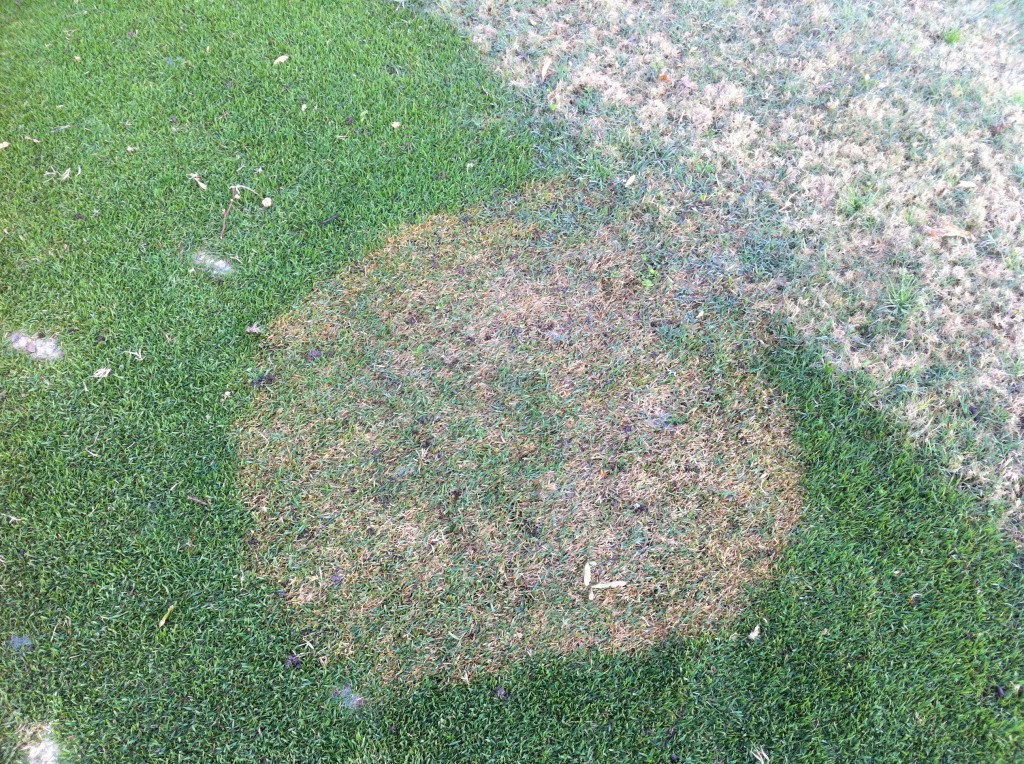As we green up various circular patches have been forming around the course and in different varieties of turfgrass. These aren’t crop circles. In fact, they are turf diseases, but nothing to be alarmed about. Typically these diseases, Spring Dead Spot and Large Patch, come and go during spring and fall without doing major damage to the turf.
Spring Dead Spot or SDS
Spring Dead Spot is the more damaging turf disease of the two currently on the course. Spring Dead Spot is a disease that attacks in the fall from soil borne pathogens. These circular patches of turf can range from 6 inches in diameter to several feet and remain dormant as the surrounding turf turns green. The patches of dormant turf eventually disintegrate, leaving depressions in the playing surface. In the fall, the pathogen infects the turf and penetrates root systems inhibiting water and nutrients to be transported. Over the course of the winter when the turf is dormant, there are no symptoms evident and everything appears normal making it unable to predict the severity of the disease. In the spring, as the weather begins to warm, the infected turf is unable to draw water and nutrients to break dormancy. For decades this disease has plagued Bermuda grass in the transition zone and extensive research and trails have been performed with no luck in confirming cost-effective and reliable fungicide treatment. The magic bullet for solving this disease has not been found. To reduce the amount of time that these spots are apparent is achieved by continuously verticutting and reapplying fertilizers to encourage the healthy turf outside of the patch to fill in.
Large Patch Disease
Large Patch is very similar to SDS, but will recover faster. Large Patch begins to attack warm season turf during the fall and infected areas are not apparent until the spring when trying to green up. Typically with an application of fungicides during the spring and fall, infected areas will decrease. Large Patch, when active, can range in size and normally in a circular pattern. Circular patches can range from 1 foot to greater than 3 feet in diameter.



